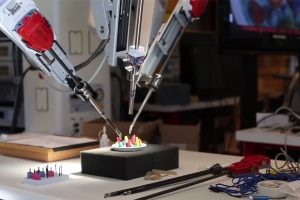
John C. Malone Professor of Computer Science Russell Taylor is guest editor of the July issue of Proceedings of the IEEE, the most highly-cited general interest journal in electrical engineering and computer science.
The special issue on “Surgical Robotics and Computer-Integrated Interventional Medicine” provides an expert overview of the major application areas as well as the key enabling technologies in the growing field of surgical robotics.
“Over the past 30 years, the development of surgical robots has enjoyed a steady growth in clinical applications, largely driven by increasing healthcare demand, patient acceptance, and the maturity of allied technologies,” wrote the editors. “However, in the future, patients and healthcare providers will become more critical about the postoperative quality, cost-effectiveness, and unique niche that robotics technologies can offer, in addition to how they can be seamlessly integrated with the overall surgical workflow.”
Along with Taylor, the guest editors include Nabil Simaan, Vanderbilt University; Arianna Menciassi, Scuola Superiore Sant’Anna of Pisa; and Guang-Zhong Yang, Imperial College London.
The issue features a number of articles by researchers from the Laboratory for Computational Sensing and Robotics, including:
- “Robotics Assistance for Intraocular Microsurgery: Challenges and Perspectives” by I. Iordachita, M. D. de Smet, G. Naus, M. Mitsuishi, and C. N. Riviere.
- “Robot-Assisted Medical Imaging: A Review” by S. E. Salcudean, H. Moradi, D. G. Black, and N. Navab.
- “Concepts and Trends in Autonomy for Robot-Assisted Surgery” by Fiorini, K. Y. Goldberg, Y. Liu, and R. H. Taylor.